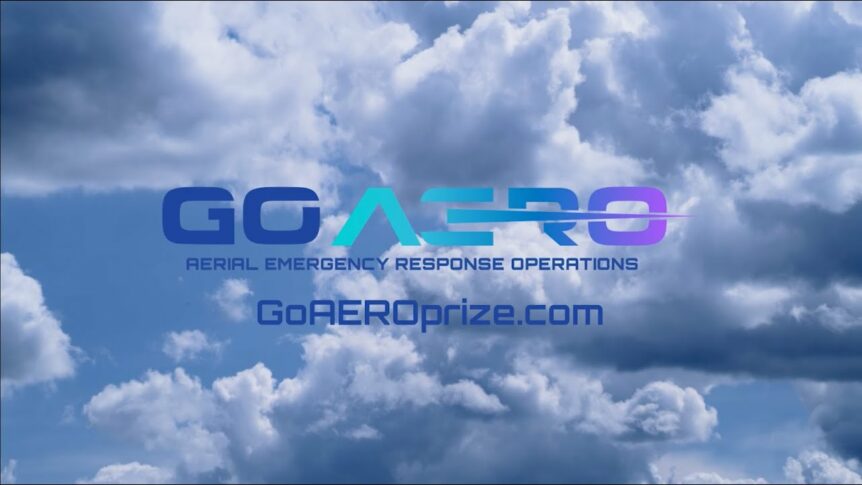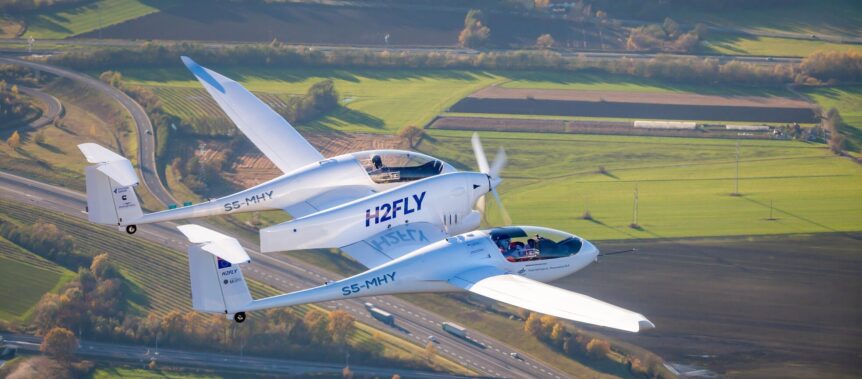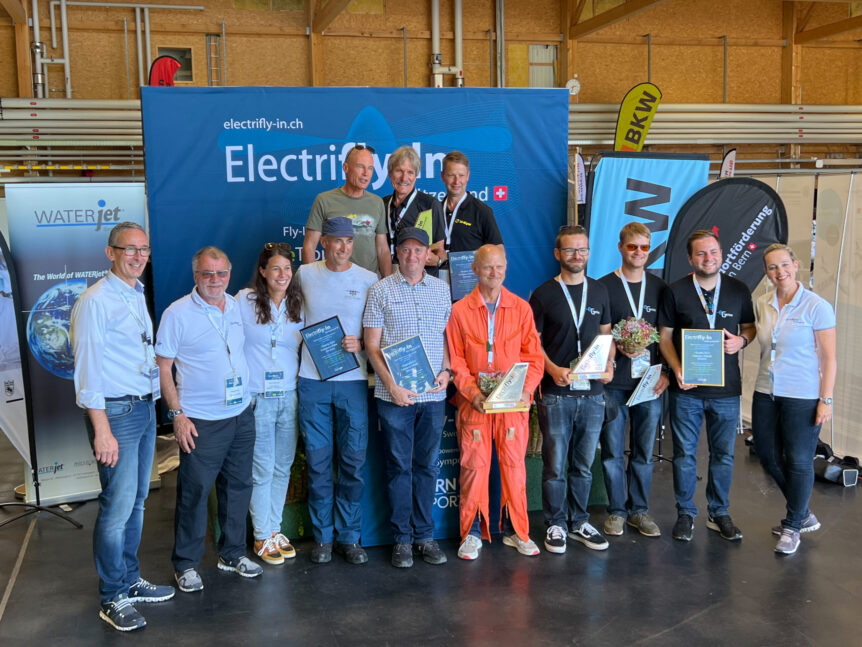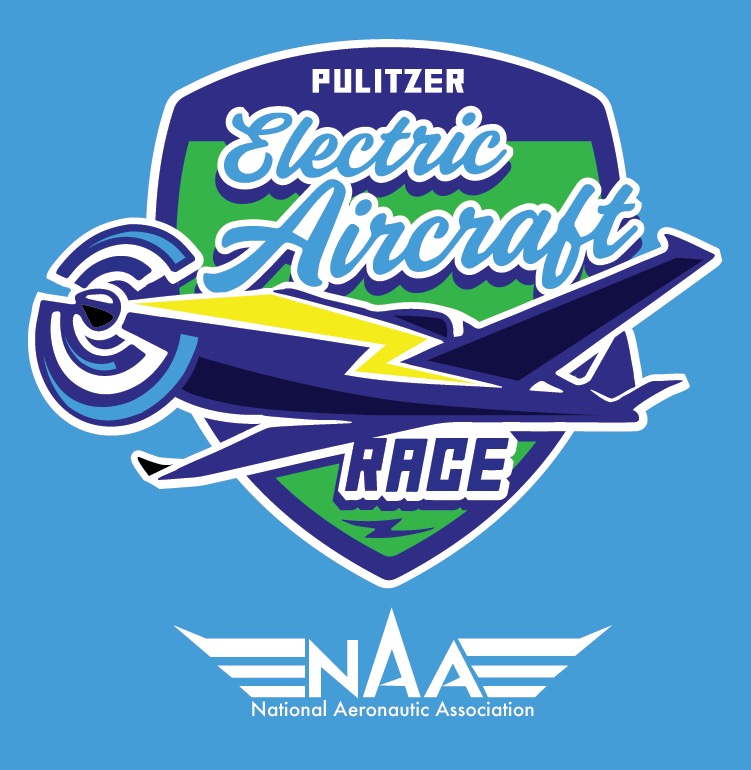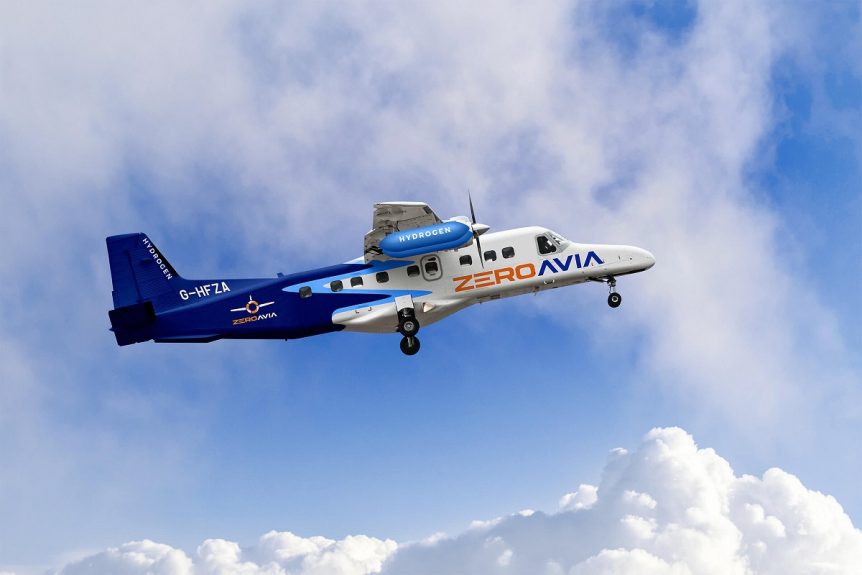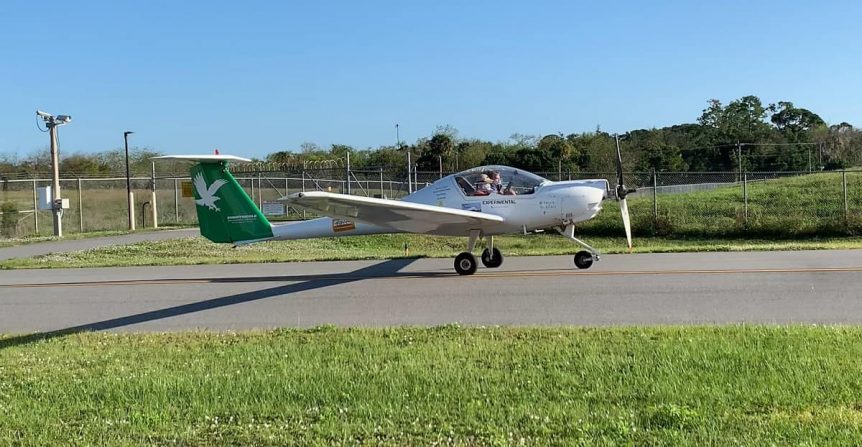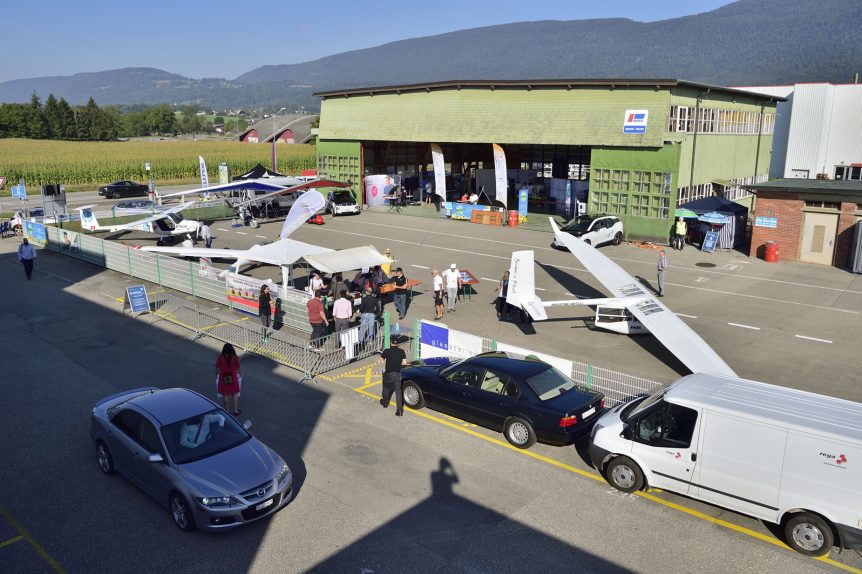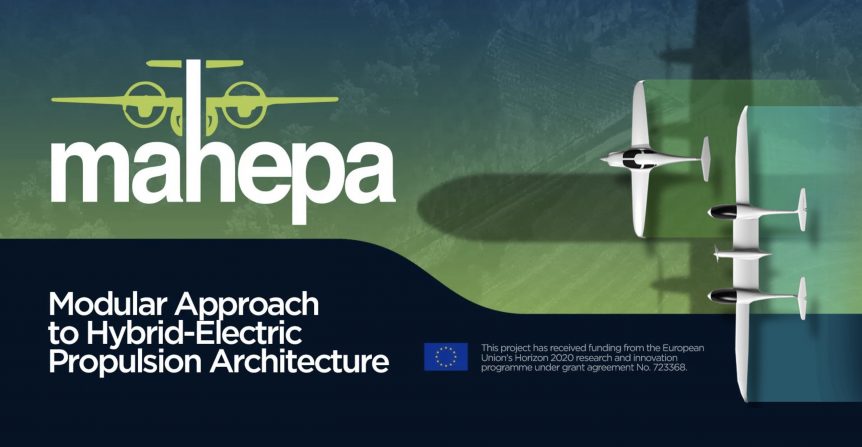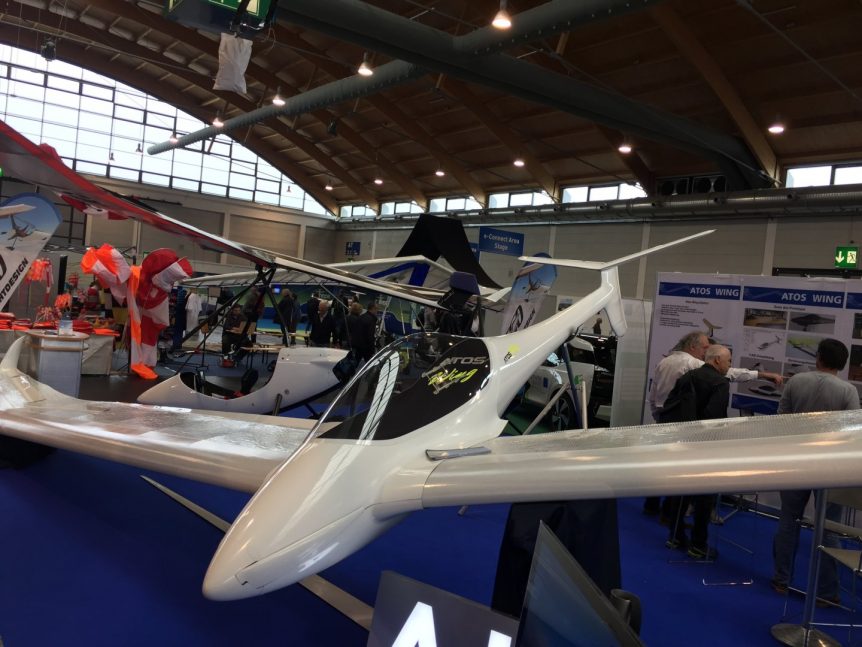The GoAero Prize has a simple-sounding, but incredibly complex goal: Design and build a safe, portable, robust, autonomy-enabled Emergency Response Flyer. The Vision The Prize’s vision defines the heroes who look past danger, who step in to be, “The difference between triumph… and tragedy, and especially, those who “Use Their Minds to Create technology that Saves Lives.” There’s $2 million waiting for those who come up with the best solutions. And the competition promises even greater glory, “This is your chance to make history… and save lives.” GoAero says, “The world needs this,” explaining that, “In the U.S. alone, nearly 4.5 million people live in “ambulance deserts,” in a medical crisis, people in these areas have to wait as long as 25 minutes or more for an emergency medical crew to arrive.” We’ve seen recent examples of how serious such waits can be. Paradise, California was a thriving community of over 26,000 before the disastrous Camp Creek fire in 2018. …
H2Fly Achieves HEAVEN’s Goal
H2Fly has an historic aircraft in its fleet, the HY4, as part of the HEAVEN program to, “Demonstrate the use of liquid, cryogenic hydrogen in aircraft.” Originally the G4, the craft won the NASA Green Flight Challenge in 2011, posting a passenger mile per gallon efficiency of 403.5 – equivalent to driving your loaded Prius from San Francisco to Los Angeles on under four gallons of fuel. Resurrected as the HY4 and flown on gaseous hydrogen, the craft has been reconfigured to fly on liquid hydrogen, expanding its range significantly. According to the HEAVEN program, “The hydrogen-electric ‘HY4’ demonstrator aircraft took off from Maribor, Slovenia, and saw safe and efficient operation throughout multiple flight tests.” Announced September 7, these were the first piloted flights of a liquid hydrogen fueled aircraft. Four flights, including one that lasted over three hours, “Lay the foundation for long-range, emissions-free flight, with liquid hydrogen doubling the range of the HY4 aircraft to 1,500[kilometers], compared to …
Electrifly-In Bern 2022 – The Year of the Hybrid
Electrifly-In Bern 2022 is a new location after five years at Grenchen, Switzerland. The Electrifly-In moved about 25 miles down the road to Bern’s bigger airport. Started by the designers of the SmartFlyer, an innovative hybrid touring craft, the event was originally called the SmartFlyer Challenge. Organizers have the serious intent of saving aviation from the “shame” that has come to accompany flight itself. “Aviation is pilloried by the public. Flying is seen as the main problem of the climate catastrophe and everyone who books a flight should have a guilty conscience and is labeled as a climate sinner. The social and political pressure to phase out combustion technology is steadily increasing worldwide. So the question is no longer if, but when electrically powered aircraft will become the norm.” This year, the fly-in offered the public several defenses against sin and shame. Beginning with the original namesake, the Smartflyer SFX1 was on display in the hangar, its carbon-fiber blackness showing …
A Pulitzer Written in the Sky
Itching to test your electric airplane’s cross-country capabilities? A new Pulitzer Electric Air Race of over 1,000 nautical miles (1,150.78 statute miles to be exact) between Nebraska and North Carolina will show who has the fastest electric flying machine. Jim Moore, reporting for the Aircraft Owners and Pilots Association (AOPA), shows the connection between the original Pulitzer Trophy and today’s electric competition. “Five of the first six pilots to have their names engraved on the Pulitzer Trophy were military airmen clocked around a closed course at speeds starting at 157 mph in 1920, up to a blistering 248 mph by 1925. The trophy was created to inspire innovation, and particularly faster airplanes. That vintage trophy housed at the Smithsonian National Air and Space Museum will be engraved with its first new name in 97 years in 2022, following completion of a 1,000-nautical-mile cross-country race by up to 25 electric aircraft.” Ralph Pulitzer was son of Joseph Pulitzer, whose prizes for …
Going Big and Bigger with Hydrogen
Two companies promoting hydrogen power for aircraft are upsizing their aspirations, with aircraft hauling four to up to 40 passengers. Both have ambitious timelines. ZeroAvia, operating in Hollister, California and Cirencester, England has been flying a Piper Malibu demonstrator, but anticipates flying a 10 to 20 passenger Dornier by 2024. It would expand that to a 50-passenger craft by 2026. H2Fly in Germany has been flying their Pipistrel-designed HY4 for several years and through six generations. The firm looks forward to taking incremental steps toward a 40-passenger regional airliner by 2030. ZeroAvia ZeroAvia reports on troubling trends in aviation’s contribution to greenhouse gases, but follows with a possible solution. According to their web site, aviation accounts for over 12 percent of total transportation emissions, and may double that by 2050. High altitude contrails mean aviation emissions have two to four times the effect of ground source emissions. Regulators want drastic changes. The European Union mandates a one quarter the CO2 …
That’s the eSpirit!
We reported in the blog four years ago that Embry Riddle Aeronautical University not only displayed their eSpirit of St. Louis at AirVenture that year, but ran the motor for the crowd. The crowd included Federal Aviation Administrator Michael Huerta, who sat in the cockpit during the runup. The eSpirit of St. Louis A product of Embry-Riddle, eSpirit is finally making its presence on the taxiway known. Kelly Pratt, writing in the Embry Riddle Aeronautical News, reports, “After nearly four years of perseverance, the Eagle Flight Research Center (EFRC) team at Embry-Riddle is celebrating a milestone in its electric propulsion research: its Diamond HK-36 completed a successful taxi test exclusively on electrical power at the Daytona Beach International Airport.” Erik Lindbergh, grandson of Charles, has been a guiding factor in eSpirit’s development, and the airplane reflects his grandfather’s “notion of balance between aviation and the environment.” The quarter-mile on the taxiway may seem like a short trip, but student Sanay …
Electrifly-in: Grenchen 2021
Electrifly-in, formerly the Smartflyer Challenge, is on for September 11 and 12, 2021, in Grenchen, Switzerland. The event, even held in 2020 despite the pandemic, is a compact showing of the latest in electrical aircraft and technology. Watch as this 2019 video as a Φnix (the Greek letter phi + nix –a clever bilingual pun) takes off, circuits the area and makes a landing – all the time flying with other electric aircraft. In this flight, you can see the compact airport (including a grass landing strip) and a lovely setting for a great event. Started as the Smartflyer Challenge* in 2016, the gathering has changed its name to be more inclusive. Last year, even with travel limitations imposed worldwide, saw a healthy turnout of all-electric flyers, ranging from ultralight electric “trikes” to cross-country tourers. From 12 to 50 Kilowatts and Beyond Powering a large number of machines on last year’s flight line, Eck-Geiger Engineering makes a range of motors …
Two Hydrogen-Powered Aerial Vehicles
Two very different hydrogen-powered aerial vehicles have come to our attention, each with a different mission, but both with endurance and range as primary functions. Both use a fairly straightforward fuel cell/motor arrangement to power their flights. Vicor/DMI Fuel Cell Drones Doosan Mobility Innovation (DMI) is a major drone manufacturer, and their largest products push against the FAA’s 55-pound (24.97-kilogram) weight limit. Their DM30, powered with a DS30 fuel cell and a 10.8 liter H2 tank weighs 21 kilograms and can carry a five kilogram (11 pound) payload. Carrying a full payload may require using the smaller seven-liter tank. Alessandro Mascellino, writing in EE Power, describes recent combination of resources that makes long-range drone deliveries possible. “The first machines built as part of the collaboration can fly two hours on a single charge and have already transported masks and emergency supplies between US Virgin Islands. The drones feature a number of power components by Vicor.” Partnering with Vicor, Doosan provides …
MAHEPA and HY4 Go High
MAHEPA (Modular Aproach to Hybrid-Electric Propulsion Architecture) is a European Union project to build emission-free aircraft. A public flight of Pipistrel’s HY4 hydrogen-powered, four-seat aircraft was the latest demonstration of the group’s progress. Challenging Objectives Overall, MAHEPA hopes to accomplish five objectives: Advancing the fuel-driven serial hybrid-electric Powertrain which uses a lightweight internal combustion engine (ICE), capable of running multiple fuels as the power generation module. Advancing the reliability of zero-emission serial hybrid-electric powertrain which uses a Proton Exchange Membrane (PEM) Hydrogen Fuel Cell (FC) as the power generation module. Advancing new airborne qualified, lightweight, high-power density components such as a 200 kW+ electric motor, a 100 kW+ generator and improved power electronics using Silicon Carbide (SiC) technology to increase efficiency of power transmission due to decreased switching losses. Developing “common building blocks” solutions also for different aircraft configurations, enabling the proliferation of powertrain modules between various aircraft. Gathering, analyzing and comparing in-flight performance and emission data in order to …
Something to Lighten the Post-Holiday Letdown
Even following Boxing Day, we have a few items to re-gift to our faithful readers, and close out the season with four very light examples of electric aviation. A-I-R ATOS Felix Ruhle has been improving and refining a basic wing design for over a decade, growing a line of aircraft that range from simple hang-gliders to fairly sleek, self-launching, electrically-powered ultralight sailplanes. The A-I-R factory/showroom in Halblech, Germany, one of 18 dealerships around the world, fronts a lush green meadow and houses a plethora of ATOS wings. The ATOS wing, coming in a range of sizes, can be attached to seemingly anything from a simple jump-off-the-nearest cliff hang-gliding rig to refined, electrically-powered ultralight sailplanes. Under development for the last few years, the ultralight sailplane merits even A-I-R’s enthusiastic approval. “The newest development of A.I.R. is revolutionary! The foldable electric powered. nearly noiseless ultralight-aircraft is based on the proven Atos hang-gliding wings! With 3-axes-steering, real elevator, retractable landing gear and propeller, …

